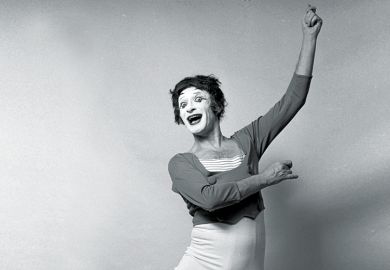View the full results of the Wall Street Journal/Times Higher Education College Rankings 2019
At Liberty University in Virginia, students would find themselves in deep trouble if they were caught with a member of the opposite sex in their dorm after hours. Sharing their room with an approved firearm, however, carries no punishment at the Christian university, which, earlier this year, opened a multimillion-dollar, 600-acre shooting range for students (although the weapon must be stored in a “secured safe” installed by the university in the student’s room).
“Attendance at a dance” or smoking a cigarette risks a $25 (£19) fine and six “points” (22 points results in disciplinary probation while more than 30 can lead to expulsion). “Participation in a social gathering where alcohol is served” incurs 18 points, a $250 fine and 18 hours of community service. But the harshest punishment of a $500 fine and 30 points is reserved for, among other things, “possession or consumption of alcoholic beverages” and spending the night with a member of the opposite sex.
“Sexual relations outside of a biblically ordained marriage between a natural-born man and a natural-born woman are not permissible at Liberty University,” says the institution’s 19-page code of conduct, known as the Liberty Way. The evangelical powerhouse is led by Jerry Falwell Jr, a Southern Baptist televangelist and right-wing activist who, in 2016, claimed that Donald Trump had offered him the job of education secretary after his presidential victory, but that he had turned it down for personal reasons.
Such “honour codes”, which often apply to staff as well as students, are common across religious universities in the US, although the specific rules differ.
At Brigham Young University, a Mormon institution in Utah, “one’s stated same-gender attraction is not an Honor Code issue”, but “all forms of physical intimacy that give expression to homosexual feelings” are deemed “inappropriate”. University accommodation is gender segregated and students cannot consume alcohol, tobacco or caffeine. There are also strict dress codes for all employees and students, including a prohibition on beards in the absence of a “beard exception for medical reasons”.
Several evangelical institutions also prescribe attendance of daily chapel and weekly worship at a local church.
While these examples may conform to the stereotype of US religious universities as socially – and usually politically – conservative, Matthew Mayhew, William Ray and Marie Adamson Flesher professor of education administration at Ohio State University, warns against tarring all faith-based institutions with the same brush.
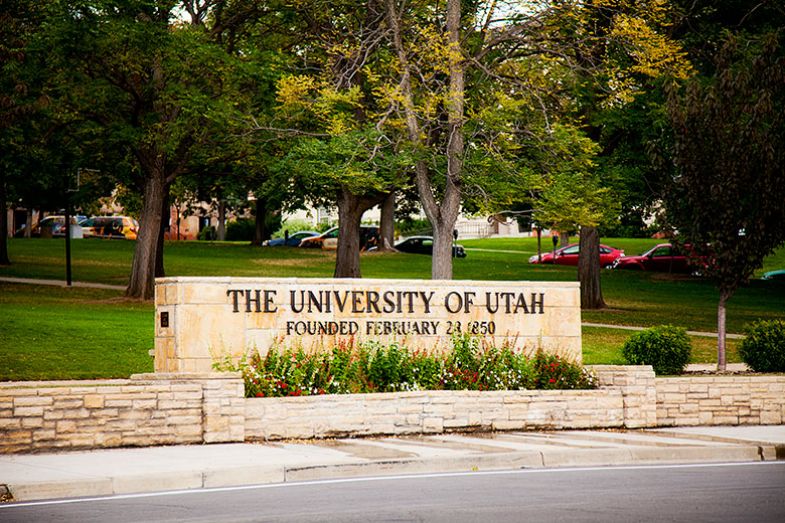
“It’s a very arbitrary way of thinking about colleges in the US these days, to try and group them by their religious commitments or their religious traditions,” says Mayhew, who is co-principal investigator of the Interfaith Diversity Experiences and Attitudes Longitudinal Survey, which seeks to “better understand student encounters with religious, spiritual and worldview diversity across the spectrum of American higher education”.
“Institutions are so nuanced in the US,” he says. “Even if an institution says it’s a Lutheran…institution, it doesn’t necessarily mean that a student who enrols in one…Lutheran institution is going to have the same experience as a student who enrols in another type of Lutheran institution.”
Michael Poliakoff is president of the American Council of Trustees and Alumni, a non-profit organisation that aims to support liberal arts education, uphold high academic standards and safeguard academic freedom. He says that despite their distinctive characteristics, religious universities in the US are not viewed as a separate segment of the country’s higher education sector, but are “fully in the mainstream”.
“It’s a resource for the nation that is very valuable,” he says. “Students and faculty who don’t want to be in communities like this have other options, but for people who want to be within this kind of religious community, it offers opportunities that are academically very strong [and] in keeping with their particular religious tenets,” he says.
Top 20: resources
| Resources rank | Overall 2019 rank | Institution name | Resources score |
| 1 | 5 | California Institute of Technology | 30 |
| 2 | 1 | Harvard University | 29.9 |
| 3 | 2 | Massachusetts Institute of Technology | 29.4 |
| 4 | 9 | Princeton University | 28.1 |
| 5 | 19 | Vanderbilt University | 27.5 |
| 6 | =7 | Brown University | 27.4 |
| =7 | 13 | Northwestern University | 27.2 |
| =7 | 14 | Rice University | 27.2 |
| 9 | 4 | Columbia University | 27.1 |
| =10 | =14 | University of Chicago | 27 |
| =10 | 10 | University of Pennsylvania | 27 |
| 12 | 12 | Dartmouth College | 26.9 |
| =13 | 11 | Cornell University | 26.8 |
| =13 | 3 | Yale University | 26.8 |
| 15 | =7 | Duke University | 26.7 |
| =16 | 6 | Stanford University | 26.1 |
| =16 | 18 | Washington University in St Louis | 26.1 |
| 18 | 32 | Tufts University | 25.8 |
| 19 | 20 | Emory University | 25.6 |
| =20 | 16 | Carnegie Mellon University | 25.3 |
| =20 | 17 | University of Southern California | 25.3 |
The results of the 2019 Wall Street Journal/Times Higher Education US College Rankings show that religious universities perform very well when it comes to student engagement, which the ranking assesses on the basis of a survey of almost 200,000 students. They are asked whether the teaching at their institution supports critical thinking and applying learning to the real world; whether they have a chance to interact with faculty and their peers; and whether they would recommend their college to a friend.
Dordt College, a Christian liberal arts institution in Iowa, ranks first on this “pillar” of the ranking for the third consecutive year, and is followed by Oklahoma Baptist University, Texas Christian University, the evangelical Cedarville University in Ohio and Brigham Young’s Provo campus, all within the top six.
Poliakoff says that “virtually all” Christian universities “stress leadership and character development”, and try to produce graduates with “honour, honesty [and] integrity” – which may explain why students at such institutions feel more engaged and why they are so well regarded by employers.
Andrew Abela, provost at the Catholic University of America (CUA) in Washington, DC, says that this university’s business school has a “strong focus on cultivating students to understand business as [being] not just about making as much money as you can but fundamentally about doing some good for society in a profitable way. We try to get students to realise that it’s…one life that you live, and you can’t have a moral side to you on Sunday and a profit side to you on Monday.”
And Hans de Wit, director of the Center for International Higher Education at Boston College, a Jesuit university, and co-editor of the 2018 book Identity and Internationalisation in Catholic Universities, argues that faith-based universities – and Catholic institutions in particular – tend to emphasise “social justice” issues, such as the environment and human rights, through their teaching and learning.
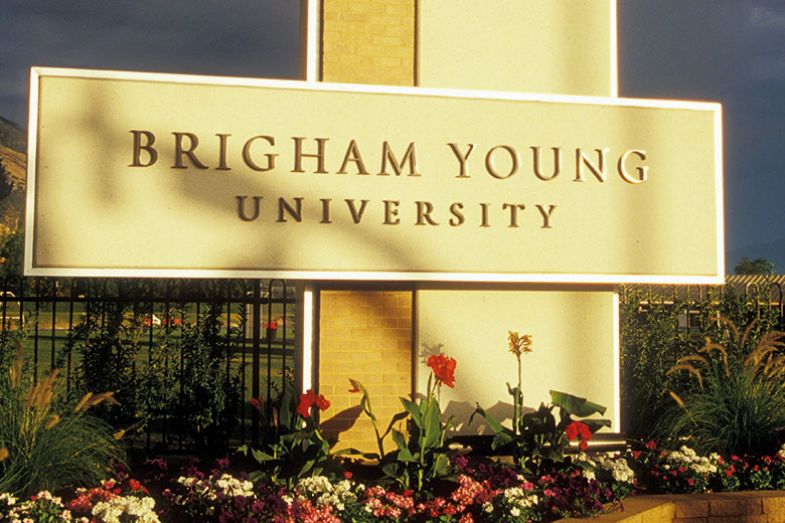
However, one major criticism of religious institutions is that they lack diversity. This is borne out by the fact that religious institutions typically figure less highly on the “environment” pillar of the ranking, which measures institutions’ proportion of international students, the racial and ethnic diversity of their students and faculty and the prevalence of students with lower family earnings. For instance, Saint Anselm College, a Benedictine liberal arts institution in New Hampshire, and Pennsylvania’s Westminster College, which is affiliated with the Presbyterian Church, are both in the bottom quarter of the table when ranked on this pillar.
De Wit says that while many Catholic universities have an emphasis on improving the diversity of their domestic student population, most “haven’t expanded that diversity issue to international students”. But Selma Botman, provost of Yeshiva University, a Jewish institution in New York City, says that the commonly held assumption that Yeshiva has a “homogeneous student body” as a result of its religious character is “not true”.
“Just like other universities, our student body is extremely multidimensional with energised and varying positions on politics, religious interpretation, modern Judaism and much more. They come to us from all parts of America and internationally,” she says, adding that students and faculty of all faiths and those with no faith are welcome.
Another common concern about religious institutions is the extent to which they interfere with academic freedom. Last year, for instance, Cedarville came under fire after implementing a “biblically consistent curriculum policy”, which stipulates that material that is “clearly pornographic, erotic, obscene, or graphic must be avoided”. Plays “with swearing must be avoided or modified” and those with “morals or teachings that run counter to the scriptural standard should be evaluated for what value they bring to the campus”. And “as a general rule, ‘R’ rated movies [which require those under the age of 17 to be accompanied by an adult] will not be shown”.
The university said at the time that the guidelines were “not designed to restrict the free discussion of ideologies, philosophies or schools of thought that may or may not run counter to biblical truth. Rather, this policy is focused on images, movies, songs, plays, or writing that may be considered ‘adult’ in nature, that represent immorality, or that may be a stumbling block to students.”
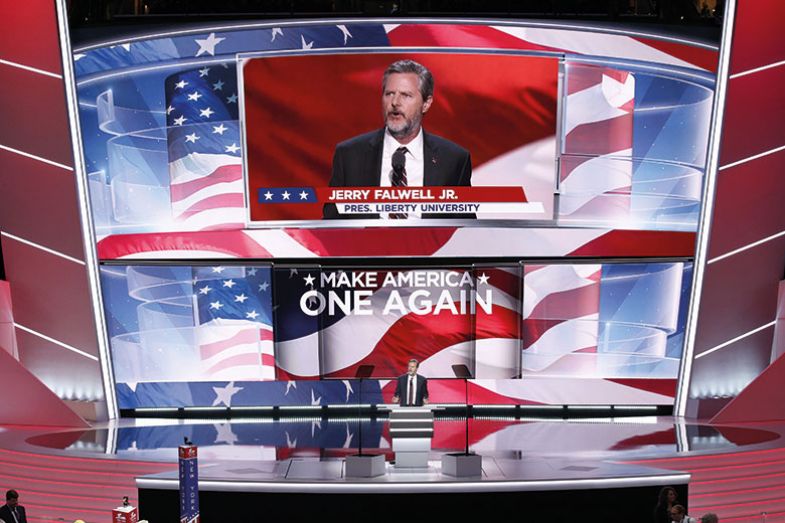
However, former scholars at the institution told THE that the policy “hobbles the faculty’s ability to train professionals in the field of humanities” and had made them “terrified of losing their jobs”.
Carl Ruby, former vice-president for student affairs at Cedarville, left the institution after 30 years just months before current president Thomas White took the helm in July 2013. He says that he attracted criticism from colleagues for “bringing in speakers who were not necessarily Republicans”.
While the Catholic university sector is more diverse politically and, generally, has more academic freedom, Ruby says evangelical universities still tend to be politically conservative. Only around a quarter of such institutions “feel like they have the freedom” to invite speakers with differing views.
“Fear of their constituency and their alumni base is still a factor that would keep a lot of them from doing that,” Ruby says.
He adds that faculty at Cedarville must sign a statement agreeing to a certain set of doctrinal beliefs, including that Creation took place in six literal days and details on when Jesus Christ will return to Earth. “Some schools would allow faculty…to do research that might advocate theistic evolution – [the theory that] evolution has occurred but God was behind it and directing it – [but at] Cedarville you would lose your job if you did that.”
Earlier this year, a survey of about 50 student journalists from 49 institutions, all of which are members of the Council for Christian Colleges and Universities (CCCU), found that around 75 per cent had been encouraged by a university representative to change or remove an article after it was published in their student newspaper, according to Inside Higher Ed.
And last month it was reported that Liberty’s Falwell reviewed and rejected student newspaper stories and opinion pieces written about Trump ahead of the 2016 election and required editors to disclose who a columnist planned to vote for.
Top 20: environment
Meanwhile, Brigham Young admits on its website that there “can be no unlimited individual academic freedom” at the institution, and a policy bars scholars from contradicting or opposing (as distinct from analysing or discussing) fundamental Mormon doctrine.
“Were there no constraints on individual academic freedom, religious universities could converge towards a secular model and lose their distinctive character, thus diminishing pluralism in academia,” the institution explains. It adds that “even secular universities…do not empower individual faculty members with absolute individual freedom relative to the university mission”, citing examples of secular institutions censoring professors for racist “expression”.
The CUA’s Abela also says that academics at his institution cannot “attempt to use the university as a platform to attack or undermine [Catholic] teachings”. Its board of trustees (which is largely made up of bishops) approves all tenure decisions, but Abela stresses that there are “no limits” when it comes to “questions of inquiry, discussion and research”. In fact, he says, the CUA – the only US university owned directly by the Catholic Church rather than an individual order – has “more academic freedom” than “most secular universities”. This is because “in many universities, people are afraid to talk about things like religion, which they think of as private. Every question here is welcome…there are no safe spaces from ideas, no forbidden topics. We have very open dialogues.”
Earlier this year, for instance, the institution hosted a debate on abortion, featuring speakers from pro-life and pro-choice organisations, he says.
And while the university is required to have a majority of practising Catholics among its faculty, there are no restrictions when it comes to student recruitment. So while 80 per cent of students are Catholic, there is also a significant minority of Muslims.
“They feel comfortable practising their faith because they know we are comfortable in ours,” says Abela.
The American Council of Trustees and Alumni’s Poliakoff agrees that academic freedom and censorship is not an issue that is confined to religious institutions, citing the rise of trigger warnings across the US sector: “A religious institution that worries about students viewing in class a film that has sexually explicit material has a mirror image in a secular institution that censors things it either deems to be racially insensitive or somehow triggering in students bad memories about a sexual encounter.”
And, at Cedarville at least, concerns about academic freedom do not seem to be harming enrolment, according to Ruby.
Top 20: engagement
| Engagement rank | Overall 2019 rank | Institution name | Engagement score |
| 1 | 365 | Dordt College | 18.2 |
| 2 | 501–600 | Oklahoma Baptist University | 17.9 |
| =3 | 422 | Cedarville University | 17.8 |
| =3 | 501–600 | Harding University | 17.8 |
| =3 | 205 | Texas Christian University | 17.8 |
| =6 | 135 | Brigham Young University-Provo | 17.7 |
| =6 | 7 | Brown University | 17.7 |
| =6 | 358 | Indiana Wesleyan University-Marion | 17.7 |
| =6 | >800 | Lee University | 17.7 |
| =6 | 17 | University of Southern California | 17.7 |
| =6 | 94 | Texas A&M University-College Station | 17.7 |
| =12 | 171 | Baylor University | 17.6 |
| =12 | 186 | Bradley University | 17.6 |
| =12 | 28 | University of Michigan-Ann Arbor | 17.6 |
| =12 | 203 | Samford University | 17.6 |
| =16 | 501–600 | California Baptist University | 17.5 |
| =16 | 25 | University of California, Los Angeles | 17.5 |
| =16 | 16 | Carnegie Mellon University | 17.5 |
| =16 | 406 | University of Cincinnati-Uptown | 17.5 |
| =16 | 251 | Concordia College at Moorhead | 17.5 |
| =16 | 501–600 | University of Northern Iowa | 17.5 |
| =16 | 126 | Ohio Northern University | 17.5 |
| =16 | 289 | Oklahoma City University | 17.5 |
However, that healthy picture may not endure for ever, he concedes. With US student debt approaching $1.5 trillion, potential applicants to religious universities are becoming “much less likely to view the debt that they have to incur to go to a more expensive private school as worth the investment”, Ruby admits.
Like other private universities, religious institutions are ineligible for public funding for teaching, and the rankings data show that faith universities are among the most expensive institutions in the US.
Trinity College in Connecticut, which was founded in the Episcopal tradition but says it is “rooted in principles of religious and academic freedom”, charges $52,760 a year in out-of-state tuition and fees, making it the second most expensive college in the table. Boston College charges $51,296; Southern Methodist University in Texas costs $50,358; and College of the Holy Cross in Massachusetts charges $48,940. Such fees can be all the more burdensome to students given that there are restrictions on religious colleges’ access to federal student aid – although the government is planning to review those regulations.
According to Ruby, such high fees are partly a result of the fact that most Christian universities receive only small amounts of funding from their associated churches. Another reason is that for large parts of their history many of them primarily produced relatively low-paid pastors and teachers, limiting their scope to raise funds from rich alumni donors and grow their endowments. Their typical focus on teaching, meanwhile, means that they receive low amounts of federal research income.
Craig Goebel, principal at Art & Science Group, a higher education consulting firm in Baltimore, says that students are also questioning the role of religion in higher education. “We hear many students say: ‘I’m very engaged in my church and my religious life. I’m also looking for strong academics in preparation for a job.’ Some of those latter elements may get overshadowed by the faith-based components” at religious institutions, he says.
Figures from the Pew Research Center also raise the question of whether religious universities are still relevant. A 2014 survey found that 41 per cent of millennials think that religion is very important, compared with 59 per cent of baby boomers and 67 per cent of the preceding “silent generation”. And just 27 per cent of millennials attend religious services at least once a week, compared with 51 per cent among the older generation.
John Jenkins, president of the research-intensive, Catholic University of Notre Dame – the top religious university in the ranking, at 26th place – admits that there is “a secular trend in the wider society that has a tendency to isolate us in the world of higher education, as well as in society at large”. But he also believes that religious universities have a unique role to play in today’s political climate in the US. He told THE in July that he was concerned by the tendency of the president and others to “capitalise on fears and anxieties”, and believed that religious institutions have a “responsibility and an opportunity to highlight those broader issues of morality and hope”.
Ruby adds that many Christian universities have evolved in recent years to reflect changing views among young evangelicals and to offset any actual or potential declines in enrolment. While older evangelicals tend to “wrap Christianity and Republican politics really tightly together”, the younger generation are much more concerned about social justice issues and tend to have “much more open views” on topics such as immigration and racial inequality, he says. As a result, some evangelical universities are increasingly hosting conferences on such topics and some are relaxing their restrictions on student and academic behaviour.
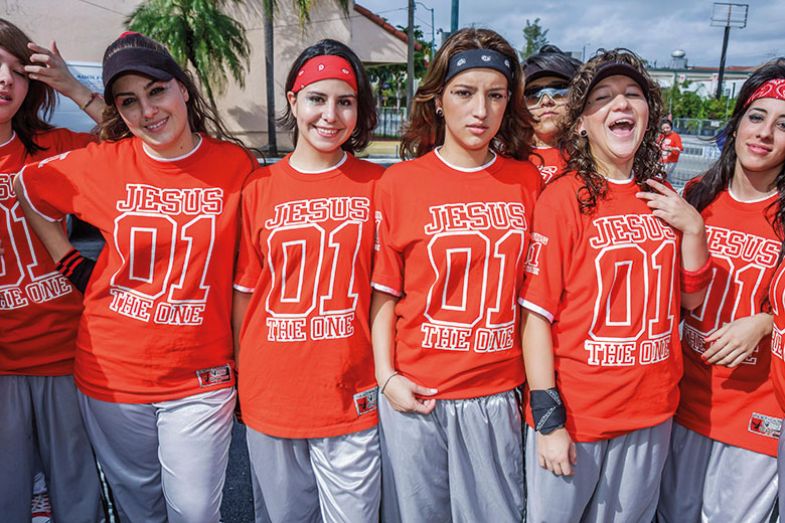
But such liberalisation can cause considerable strain within Christian higher education. For instance, in 2015, Union University in Tennessee, an evangelical liberal arts institution, quit the CCCU after Eastern Mennonite University and Goshen College became the first members to express a willingness to hire faculty members in same-sex marriages. A month later, the latter institutions announced they would resign from the council to avoid splitting it. The council said that if any other members changed hiring policies in ways that conflict with “the historic Christian view of marriage”, then their membership status would be changed to “pending” and they would be referred to a task force for review.
Timothy Gombis, professor of the New Testament at Cornerstone University, an evangelical institution in Michigan, says such divisions are mirrored within individual colleges. While many such institutions have academics and student populations that are “progressive and want to address issues of justice”, governing bodies still tend to consist of “white men who believe in the Protestant work ethic. Presidents must raise money from these people, so with a few exceptions, including my own institution, there is a divide between the governing bodies and the people who inhabit the schools day in and day out.”
Art & Science Group’s Goebel adds that institutions often wrestle with the question of whether they should adapt to the market by watering down or abandoning their religious ethos. But, for him, this is a “false dichotomy” since many of the religious colleges that have done “really well in recent years have not abandoned their mission of faith-based education, but have instead expanded their [sales pitches] to include other aspects of what they’re providing – namely, strong academics, strong research and preparation for careers. You don’t have to full-out abandon a faith-based education in order to accomplish this,” he says.
Ruby adds that while many religious universities are indeed adapting, there is “always going to be a niche for the more conservative, hard-line traditional evangelicals”.
An uncompromising approach, he says, is part of what helps evangelical universities thrive. “They’re not trying to be a school that appeals to everyone,” he says. “They’re appealing to a student who is looking for something that is distinctly different.”
Top 20: outcomes
| Outcomes rank | Overall 2019 rank | Institution name | Outcomes score |
| =1 | 7 | Duke University | 39.6 |
| =1 | 1 | Harvard University | 39.6 |
| =1 | 3 | Yale University | 39.6 |
| 4 | 9 | Princeton University | 39.5 |
| =5 | 4 | Columbia University | 39.2 |
| =5 | 2 | Massachusetts Institute of Technology | 39.2 |
| =7 | 5 | California Institute of Technology | 39.1 |
| =7 | 12 | Dartmouth College | 39.1 |
| 9 | 6 | Stanford University | 39 |
| 10 | 10 | University of Pennsylvania | 38.9 |
| 11 | 11 | Cornell University | 38.8 |
| 12 | 14 | University of Chicago | 38.4 |
| =13 | 22 | Amherst College | 38.1 |
| =13 | 16 | Carnegie Mellon University | 38.1 |
| 15 | 7 | Brown University | 38 |
| 16 | 23 | Williams College | 37.9 |
| 17 | 13 | Northwestern University | 37.8 |
| 18 | 60 | Georgia Institute of Technology | 37.7 |
| 19 | 21 | Johns Hopkins University | 37.6 |
| =20 | 28 | University of Michigan-Ann Arbor | 37.4 |
| =20 | 18 | Washington University in St Louis | 37.4 |
Our methodology
WSJ/THE US College Rankings 2019: access the results in full
Register to continue
Why register?
- Registration is free and only takes a moment
- Once registered, you can read 3 articles a month
- Sign up for our newsletter
Subscribe
Or subscribe for unlimited access to:
- Unlimited access to news, views, insights & reviews
- Digital editions
- Digital access to THE’s university and college rankings analysis
Already registered or a current subscriber?

